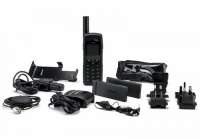
We've Got News: Roadpost Inc. and Your New BlueCosmo Experience
We are excited to share an important update with you: moving forward, all of our mobile satellite products and services in the USA will be distributed under the BlueCosmo brand.
We Look Forward to Serving You
Thanks for your loyalty. We look forward to serving you under BlueCosmo.
 Visit BlueCosmo
Visit BlueCosmo
Shop With Us Online:
Understanding Our Brand Structure
Since 2016, Roadpost USA Inc., has been distributing mobile satellite solutions both under our own name and under the BlueCosmo brand. Moving forward, we will distribute mobile satellite solutions exclusively under the BlueCosmo brand in the USA.
Thanks For Your Continued Support
Thank you for your loyalty and trust in us. We look forward to continuing to serve you with the best mobile satellite products and services under BlueCosmo.
Visit BlueCosmoIf you have questions about this change or need support, please contact us.




